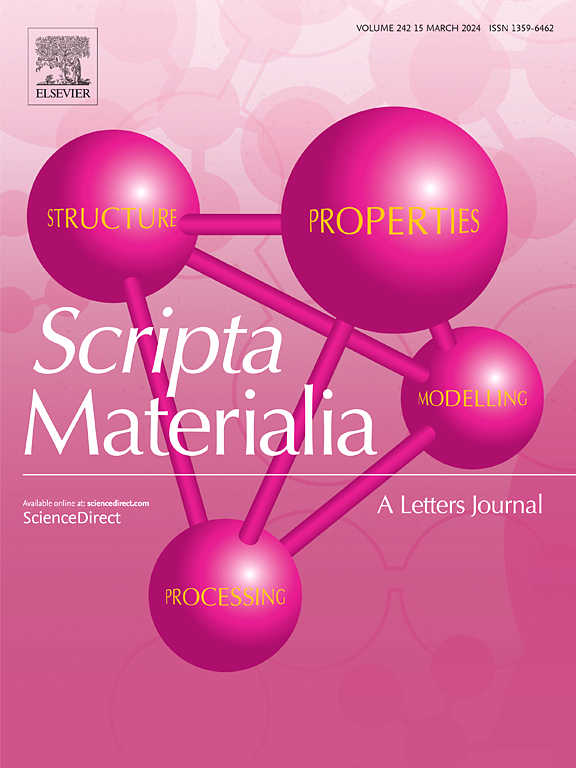Evading crystallization in bulk metallic glass produced under ultra-high flow velocity
IF 5.3
2区 材料科学
Q2 MATERIALS SCIENCE, MULTIDISCIPLINARY
引用次数: 0
Abstract
High flow velocity has been shown to accelerate crystallization in various supercooled liquids, including metallic glass, although the underlying mechanisms remain unclear. This study explores the solidification behavior of the Zr58.5Cu15.6Ni12.8Al10.3Nb2.8 (Vit 106a) metallic glass under varying casting flow velocities. Remarkably, our findings reveal that the primary cause of flow-induced crystallization (FIC) is high strain rates, generated by mold collisions, rather than the flow velocity itself. FIC can be evaded by reducing the strain rate without a decrease in the flow velocity of the melt during the filling process. These findings not only clarify the origins of FIC in glass-forming liquids but also provide a new approach to addressing the conflict between the demand for ultra-high flow velocity in casting complex, ultra-thin metallic glasses and the tendency for FIC, offering valuable insights for the design and processing of metallic glass components for large-scale applications.

求助全文
约1分钟内获得全文
求助全文
来源期刊

Scripta Materialia
工程技术-材料科学:综合
CiteScore
11.40
自引率
5.00%
发文量
581
审稿时长
34 days
期刊介绍:
Scripta Materialia is a LETTERS journal of Acta Materialia, providing a forum for the rapid publication of short communications on the relationship between the structure and the properties of inorganic materials. The emphasis is on originality rather than incremental research. Short reports on the development of materials with novel or substantially improved properties are also welcomed. Emphasis is on either the functional or mechanical behavior of metals, ceramics and semiconductors at all length scales.
 求助内容:
求助内容: 应助结果提醒方式:
应助结果提醒方式:


